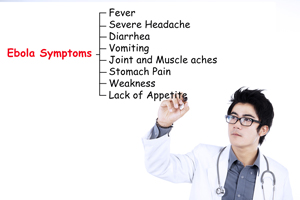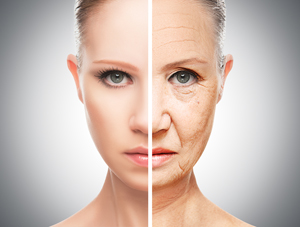We receive thousands of questions every month at The Baseline of Health® Foundation, not to mention the numerous questions received by Baseline Nutritionals®, with whom I’m also associated. Those that can be handled by the Foundation staff and the Baseline Nutritionals customer support team are forwarded to me! Some of those questions open the door to broader issues related to health and nutrition. I’ve selected some of those questions to share with you today. (Note: these questions come from both the Baseline of Health Foundation and Baseline Nutritionals. Normally, I keep these two sites separate and only rarely mention a Baseline Nutritionals’ product by name on the Foundation website. This, however, is one of those occasions where it makes sense to do so because many of the questions that come to me are product/ingredient specific. With that said, let’s take a look at some of the Q and A.)
Ebola
Question:
About a month ago, you sent out a newsletter observing that most of the news about Ebola amounted to “fear mongering” and that you thought we shouldn’t be that worried about it, that it wasn’t a threat. With all the recent news about how it’s spreading through Africa, that the World Health Organization declared it an epidemic, and we keep hearing about people flying into different countries carrying Ebola with them, are you still as confident that we have nothing to worry about?
Answer:
Perhaps you misunderstood. What I said was:
“Make no mistake, this outbreak is a threat–but more so for people in Africa than for anyone in the developed world.”
I also pointed out that there are three main differences between Africa and the developed world which limited the possibility of a notable Ebola outbreak outside of Africa.
 The developed world has better training for dealing with highly infectious diseases.
The developed world has better training for dealing with highly infectious diseases.- The developed world has superior healthcare infrastructure and technology. It may not be fair, but it’s true.
- Then I talked about culture. The eating of bush meat is much less common in the developed world, and contact with body fluid from contaminated animals is required for Ebola to keep spreading. This is so key to the perpetuation of Ebola that researchers have mapped out the areas where human contact with infected animals is likely to occur. They are almost entirely in Central and West Africa–not Europe, America, or Asia.1 Kate Kelland. “Ebola map shows people in more African regions risk infection from animals,” Reuters Kate Kelland. (Accessed 8 Sept 2014.) http://www.reuters.com/article/2014/09/08/us-health-ebola-map-idUSKBN0H314G20140908 . And, perhaps even more important, despite the low levels of satisfaction with most of the governments in the US, Europe, and the BRIC countries (Brazil, Russia, India, and China), it is unlikely that you will ever see in those countries what you saw in Liberia where the people were so distrustful of the government and so disbelieving of the reality of the disease that they looted an Ebola clinic, “set free” the patients, and stole all of the infected bedding.2 “Ebola Clinic Is Looted In Liberian Capital’s Largest Slum.” The World Post. 08172014. (Accessed 7 Sept 2014.) http:www.huffingtonpost.com2014817liberia-ebola-clinic_n_5685635.html Unbelievable, but not unpredictable. And it’s not getting any better as inadequate healthcare facilities are being overwhelmed.3 ROBERT MACKEY. “Video Shows Panic in Liberia as Man Wanders Out of Ebola Clinic.” The New York Times. SEPT. 2, 2014. (Accessed 7 Sept 2014.) http:www.nytimes.com201493worldafricavideo-shows-panic-in-liberia-as-man-wanders-out-of-ebola-clinic.html
It’s not that we don’t have distrustful nonbelievers in the US. Some of them even expressed their contrarian opinions in the comment section of my Ebola newsletter. But experience says that both their inclination and ability to break high risk patients out of hospital quarantine–let alone stealing contaminated bedding–is likely far more limited than what we’ve seen in Liberia. I would guess that the discipline and cooperation that we saw during the last outbreak in Uganda is more typical of what we would see in countries of the developing world.
All that said, Ebola is unlikely to spread in any significant way outside of Africa. While it’s not impossible that we will see as many as 20,000 coming down with Ebola in Africa over the next six to nine months before this current outbreak is finally brought under control, it will most likely remain an “epidemic” located in Central and West Africa, as WHO declared it–and not become a worldwide pandemic.
In addition, the experimental drugs seem to have performed well, with several infected healthcare workers recovering after being treated with them. And even as I write this, two new vaccines, one out of Canada4 “Ebola vaccine developed in Canada may be 1st approved for use.” The Canadian Press Sep 06, 2014. (Accessed 7 Sept 2014.) http:www.cbc.canewscanadamanitobaebola-vaccine-developed-in-canada-may-be-1st-approved-for-use-1.2757996 and one out of the US,5 LAURAN NEERGAARD. “Monkey Study: Ebola Vaccine Works, Needs Booster.” ABC News. Sept 7, 2014. (Accessed 7 Sept 2014.) http:abcnews.go.comTechnologywireStorymonkey-study-ebola-vaccine-works-booster-25329227 have shown promise and are likely to be fast tracked for approval. They are likely to prove helpful, at least for healthcare workers who will most likely take them. As to whether or not the general population in some countries will allow themselves to be vaccinated may be a different question. But with proof of vaccination likely to be a requirement for travel out of an “infected” country during any active outbreak, the process will be self-regulating in terms of preventing any outbreak from spreading internationally.
Incidentally, a story currently circulating through the alternative media is that the CDC owns “a patent on Ebola” and will use the patent to create fortunes for the pharmaceutical companies. For example:
“The formula is always the same: create alarm, bring a vaccine to market, then scare governments into buying billions of dollars worth of vaccines they don’t need.”6 Mike Adams. “Why does the CDC own a patent on Ebola ‘invention?” Natural News. August 03, 2014. (Accessed 10 Aug 2014.) http://www.naturalnews.com/046290_ebola_patent_vaccines_profit_motive.html
Such claims are actually a misrepresentation of the facts on the ground on multiple levels. First, the patent is not “on Ebola.” It is for the “isolation and identification” of a particular species of Ebola known as EboBun, which has been seen just once in a particular outbreak in Uganda. But the bigger problem is in thinking that Ebola is being “engineered” to create fortunes for pharmaceutical companies. Someday I may go into a detailed explanation of how and where pharmaceutical companies make their money–and in many situations it is indeed unethical, but Ebola isn’t one of them. Part of the problem with Ebola is that pharmaceuctical companies don’t view it as very profitable. You need to understand how much it now costs to bring a drug to market. Current estimates put that figure at close to $1 billion per drug.7 Jason Shafrin. “Cost to bring drug to market: $802m.” Healthcare Economist. Apr 29, 06. (Accessed 10 Sept 2014.) http://healthcare-economist.com/2006/04/29/802m/ That’s billion with a “b.” Given that it costs a billion dollars to bring a drug to market, where would you rather spend your money?
- On developing a drug that hundreds of millions of people will have to take every day for the rest of their lives? Think statin drugs.
- Or on a vaccine for Ebola that maybe 10,000 or 100,000 people will take just once in their lives–or at most a couple of times in their lives when an Ebola outbreak happens in their particular neighborhood?
Quite simply, the reason there is no vaccine currently available from a major pharmaceutical company for Ebola is that it’s just not that profitable. Which, by the way, is why we are entering the “post antibiotic” era. Not because new antibiotics can’t be developed, but because pharmaceutical companies just don’t find it profitable to spend a billion dollars developing a new antibiotic that wil only be used by a few hundred thousand people for 6-10 days once or twice in their lives–and only be viable for 3-5 years before the bacteria evolve around it rendering it useless. There’s simply no money in it for a “for profit” company. But that’s a story for another time.
Quite simply, the stories about the CDC patent on Ebola are yet another example of media fear mongering, plain and simple.
The bottom line is that my opinion on the current state of Ebola, in answer to your question, remains unchanged. This outbreak of Ebola is likely to be disaster and a huge, human tragedy in Central and West Africa. And, yes, a few cases may wander out and infect a small handful of people in other countries, but it still looks unlikely that this outbreak will spread in any significant way throughout the world. And I also believe that most of the fear is still being irresponsibly spread by those in both the mainstream media and the alternative press who believe that ratings trump serving the community.
Allergic Reactions to Brown Rice
Question:
I have a daughter with an egg allergy. The specialists say she should avoid eggs, but no one has ever said, the same protein can be found in other foods. My daughter has reacted to sunflowers in the past, despite their showing up negative in a blood test. The specialist put it down to the pollens, but I now discover it has 38% albumin! In your article it says brown rice is hypoallergenic, but my daughter also reacts to brown rice. I have been trying, unsuccessfully to find out the proteins in brown rice. Do you know what these are?
Answer:
 The albumin family consists of all proteins that are water-soluble, are moderately soluble in concentrated salt solutions, and experience heat denaturation. Albumins are commonly found in blood plasma, and are unique from other blood proteins in that they are not glycosylated. Substances containing albumins, such as egg white, are called albuminoids. Albumins are also found in the seeds of some plants such as sunflower seeds. Note: although all albumins share certain characteristics as stated above, they are all different–and an allergy to one does not necessarily mean an allergy to another.
The albumin family consists of all proteins that are water-soluble, are moderately soluble in concentrated salt solutions, and experience heat denaturation. Albumins are commonly found in blood plasma, and are unique from other blood proteins in that they are not glycosylated. Substances containing albumins, such as egg white, are called albuminoids. Albumins are also found in the seeds of some plants such as sunflower seeds. Note: although all albumins share certain characteristics as stated above, they are all different–and an allergy to one does not necessarily mean an allergy to another.
Brown rice foods rarely cause allergic reactions in the United States or Europe. Such reactions are more common in Asia or where rice is a staple food. Since many people cultivate rice in Asia, a considerable number of rice-related allergies result from contact with airborne pollen rather than ingestion, since rice pollen contains an allergen called Ory s 1.8 Xu H1, Theerakulpisut P, Goulding N, Suphioglu C, Singh MB, Bhalla PL. “Cloning, expression and immunological characterization of Ory s 1, the major allergen of rice pollen.” Gene. 1995 Oct 27;164(2):255-9. http://www.ncbi.nlm.nih.gov/pubmed/7590339 (It looks like your allergist knew what she was talking about.) And when not caused by pollen, in some cases, allergic reactions to rice are actually the result of contamination or the inclusion of food additives derived from sources other than rice.
On the other hand, some people do suffer from an intolerance to rice (think lactose intolerance), which means their bodies are unable to properly absorb or process rice proteins. This is different from a rice allergy. Rice intolerance symptoms are usually delayed for several hours or, in some cases, up to a day or two. Different people experience different symptoms when they have a rice intolerance. This is true with all food intolerances, as they are highly individual. Like most food intolerances (again, think lactose intolerance) digestive enzymes may be able to alleviate the problems.
Testing for Heavy Metals
Question:
I recently did the heavy metal detox for 45 days. My naturopath tested me for heavy metal levels using DMSA. My lab report came back showing no decrease in the levels of heavy metals than before using your protocol. What method and lab should I use to determine heavy metal levels using your metal cleanse?
Answer:
There are three modes of testing used to determine if you are carrying toxic loads of heavy metals. All have their value…and their limitations.
- DMPS or DMSA provocation testing is a blood test that measures the amount of heavy metals being removed through the urine after a provoking agent (DMPS or DMSA) has been used. The key to this test is that it does NOT show the amount of mercury and other heavy metals that are IN the body; it only shows what is being removed. Therefore, this test must be taken numerous times over the course of the detoxification protocol.
- Hair analysis uses a tablespoon of hair collected from the nape of the neck, which is analyzed for its mineral content. Hair holds a history of the past 3 months, but there is much speculation concerning the effectiveness of this type of testing and many believe that the test is useless.
- Fecal testing and urine analysis reveal the effectiveness of chelation therapy in excreting heavy metals from the body. During chelation therapy, a chelating agent “provokes” excretion of heavy metals. These tests then measure the amounts of heavy metals that are being excreted during chelation therapy.
That said, it is important to repeat that DMSA testing does NOT show the amount of mercury and other heavy metals that are “in the body”; it only shows what “is being removed”. Therefore, this test must be taken numerous times over the course of the detoxification protocol to show whether or not those levels are higher during the detox. If they are, then you know the detox is working. You also need to have the results of a test that you ran before you started the detox to get a baseline reading.
Too Much Vitamin A
Question:
I would like to use your Ultimate Antioxidant formula and the Synergy multivitamin that you recommend, but that is 15,000 IU of vitamin A. Is that a little risky?
Answer:
Actually, there is 0 IU of vitamin A in these two formulas combined. There are, however, 15,000 IU of naturally sourced beta carotene, a vitamin A precursor–which your body converts to vitamin A on an as needed basis. The worst that happens with excess beta carotene (over 75,000 to 85,000 IU a day) is that your skin can start to pick up a bit of an orange tint. All in all, 15,000 IU of natural beta carotene presents zero risk. On the other hand, under no circumstances would you want to use any IU of the far cheaper synthetic beta carotene, which you will find in many commercial supplements as produced by less conscious companies.
Too Little Selenium
Question:
Why is the selenium so low in your Ultimate Antioxidant?
Answer:
For the first 10 years Ultimate Antioxidant was on the market, it carried 140 mcg of selenium. Last year, I cut it to 55 mcg. The reason is that I don’t design formulas to look good on labels, but for how they are used in the real world. When I first created Ultimate Antioxidant, almost no one included selenium in their supplements, so I pushed the dosage up to provide the optimal amount they needed, assuming they were also getting some, but not necessarily enough, in their diet. What changed is that over the last decade studies came out promoting the value of selenium so that it suddenly became “hot.” Now everybody includes selenium in their multivitamin/mineral formulas–even Centrum now includes selenium–the inorganic kind, of course–but still included.
This presents a problem. Selenium, although essential for health–is actually something that becomes toxic to the body if you get too much. As I said, I design formulas for the real world, not label bragging rights. Since most people take a multivitamin, and since most of them contain selenium, I backed the amount down in UA to avoid the problem of potential overdosing.
It is crucial when buying supplements that you buy formulas that have been designed for the real world, not just to look good on a label.
Seaprose S Versus Serrapeptase
Question:
I’ve been taking different brands of systemic proteolytic enzymes for several years. I notice that in place of serrapeptase you recommend Seaprose S as superior. One of the other brands I take says that “Seaprose is just a crystalline form of mucolase.” If that is the case, how could the Seaprose enzyme be a substitute for serrapeptase?
Answer:
 Mucolase is not the name of an actual enzyme, but a trademarked brand name.9 http://tmsearch.uspto.gov/bin/showfield?f=doc&state=4808:io4rg0.2.2 It can be anything the person doing the trademark says it is. Then again, since trademarks are just names; no scientific support is required–just a name that no one else is using. As a made up name, the people who control the name can say anything they want about it. That said, as you probably noticed in my newsletter, I cite a number of studies that clearly show that Seaprose is superior to serrapeptase and has fewer side effects. One in particular states, “At the end of the treatment with Seaprose S, efficacy was assessed as good or excellent in 85% of the cases, compared with 65% for serratio-peptidase.”10 Bracale G, Selvetella L. “Clinical study of the efficacy of and tolerance to seaprose S in inflammatory venous disease. Controlled study versus serratio-peptidase.” Minerva Cardioangiol. 1996 Oct;44(10):515-24. http://www.ncbi.nlm.nih.gov/pubmed/9091835
Mucolase is not the name of an actual enzyme, but a trademarked brand name.9 http://tmsearch.uspto.gov/bin/showfield?f=doc&state=4808:io4rg0.2.2 It can be anything the person doing the trademark says it is. Then again, since trademarks are just names; no scientific support is required–just a name that no one else is using. As a made up name, the people who control the name can say anything they want about it. That said, as you probably noticed in my newsletter, I cite a number of studies that clearly show that Seaprose is superior to serrapeptase and has fewer side effects. One in particular states, “At the end of the treatment with Seaprose S, efficacy was assessed as good or excellent in 85% of the cases, compared with 65% for serratio-peptidase.”10 Bracale G, Selvetella L. “Clinical study of the efficacy of and tolerance to seaprose S in inflammatory venous disease. Controlled study versus serratio-peptidase.” Minerva Cardioangiol. 1996 Oct;44(10):515-24. http://www.ncbi.nlm.nih.gov/pubmed/9091835
So, when it comes to what to believe, are you going to believe things written about a made up trademark or a scientific study?
Incidentally, Seaprose S now goes by the name Protease S.
Fungal Protease
Question:
I would like to know the source of the fungal protease and fungal pancreatin in your systemic proteolytic enzyme formula.
Answer:
The vast majority of vegetarian proteolytic enzymes used in supplements–other than plant based proteases such as bromelain and papain–are derived from the fermentation of specially cultured strains of the Aspergillus fungus, most commonly Aspergillus niger.11 http://en.wikipedia.org/wiki/Aspergillus_niger In other words, the vast majority of vegetarian proteases used in supplements are fungal proteases. Note: assuming that your manufacturer sources high purity enzymes from reputable manufacturers, none of the fungus actually makes it into the final product–just the proteases that they produce.
Source of Carnosine
Question:
Where is the L-Carnosine used in supplements found or extracted from prior to its supplement form? Is this a plant-based antioxidant or does it come from bacteria?
Answer:
While it’s true that all of the early research on L-Carnosine (in the early 1900’s) was carried out using L-Carnosine extracted from cattle, that’s not true of supplemental carnosine sold today. The carnosine sold in supplements is manufactured by a fermentation process using friendly bacteria which are fermented in massive vats and then harvested, processed and refined to provide 99.9% pure bio-identical L-Carnosine. The bacteria used for fermenting are a lot like probiotics, so L-Carnosine is vegetarian friendly. There are no human or animal sources used in its manufacture.
Your question also implies that you may not exactly understand what bacteria are. Interestingly, they are neither plant nor animal. Living things are classified into 5 kingdoms – animalia, plantae, fungi, protista, and monera. Bacteria are monera. Keep in mind that the number of different bacteria in the world is almost beyond counting. One study found 20,000 different species of bacteria in a single quart of seawater. The total number of bacteria on earth is estimated to be 5,000,000,000,000,000,000,000,000,000,000. We actually have more bacteria living on and in our bodies than we have cells in our body. This is called the microbiome. Even wilder, all of the mitochondria in our cells (the energy factories that drive our cells) have entire separate DNA from the rest of our body–bacterial DNA.12 http://en.wikipedia.org/wiki/Mitochondrion
The bottom line is that although bacteria are single celled life forms, they are anything but simple and have a very complex relationship with all life forms on the planet, including ours. But to repeat again, bacteria are not animal based. The process used for manufacturing supplemental carnosine is totally vegetarian!
Is Bacopa Safe?
Question:
Is Bacopa monnieri really safe to use? You use it in one of your formulas. WebMd expresses the following concerns about bacopa.13 “BRAHMI Side Effects & Safety.” WebMD. (Accessed 5 Sept 2014.) http://www.webmd.com/vitamins-supplements/ingredientmono-761-BRAHMI.aspx?activeIngredientId=761&activeIngredientName=BRAHMI
- Slow heart rate (bradycardia): Brahmi [bacopa] might slow down the heartbeat. This could be a problem in people who already have a slow heart rate.
- Lung conditions: Brahmi might increase fluid secretions in the lung. There is concern that this could worsen lung conditions such as asthma or emphysema.
Answer:
Notice the use of the word “might” in all of WebMD’s cautions. If you search WebMD for the side effects of garlic, you will find similarly qualified statements such as, “Garlic, especially fresh garlic, might increase bleeding.”14 “GARLIC Side Effects & Safety.” WebMD. (Accessed 5 Sept 2014.) http://www.webmd.com/vitamins-supplements/ingredientmono-300-GARLIC.aspx?activeIngredientId=300&activeIngredientName=GARLIC Or Echinacea, which according to WebMD “might” have an effect on the immune system that could make autoimmune diseases worse.15 “ECHINACEA Side Effects & Safety.” WebMD. (Accessed 5 Sept 2014.) http://www.webmd.com/vitamins-supplements/ingredientmono-981-ECHINACEA.aspx?activeIngredientId=981&activeIngredientName=ECHINACEA Again, the use of the qualifier–“might”. The problem is that after checking out WebMD, you certainly wouldn’t want to take any of these herbs, would you, or eat at an Italian restaurant for that matter? After all, is something that “might” make you bleed safe? Or is something that aggravates autoimmune conditions safe? Are you sensing a pattern? Look up the side effects on any herb on WebMD and you will find a list of a number of “mays” and “mights.” If you were to take WebMD literally, you probably wouldn’t want to use any herbal or natural medicine. Then again, how surprising is that from a site named WebMD?
That said, yes, the use of bacopa will slightly slow down the heart rate since it works to even out the nervous system–even reducing levels of anxiety. But unless you already have an abnormally slow heart rate or are using excessively large amounts of bacopa, most people would consider that a benefit.
As for the lung issue, you might note that same concern is repeated “in exactly the same wording” a number of times on different websites talking about bacopa. In fact, that’s true for all the listed side effects–but with no reference to any studies. Just a guess, but this may simply be yet another case of things on the internet becoming “true” simply because people keep cutting and pasting an original unfounded statement until it becomes “true” by repetition. Returning to the lung issue, it’s worth noting that the one study that talks about bacopa and increased mucosal secretions considers it a benefit, not a health concern.16 Goel RK1, Sairam K, Babu MD, Tavares IA, Raman A. “In vitro evaluation of Bacopa monniera on anti-Helicobacter pylori activity and accumulation of prostaglandins.” Phytomedicine. 2003;10(6-7):523-7. http://www.ncbi.nlm.nih.gov/pubmed/?term=13678238
Bottom line: unless you have an underlying health issue that would preclude its use, the moderate use of bacopa, as found in in the formula where I use it, is likely to be quite safe and quite beneficial.
You might find this study on bacopa interesting. It will give you a better idea as to why I use it.17 Carlo Calabrese, William L. Gregory, Michael Leo, Dale Kraemer, Kerry Bone, Barry Oken. “Effects of a Standardized Bacopa monnieri Extract on Cognitive Performance, Anxiety, and Depression in the Elderly: A Randomized, Double-Blind, Placebo-Controlled Trial.” J Altern Complement Med. Jul 2008; 14(6): 707–713. http://www.ncbi.nlm.nih.gov/pmc/articles/PMC3153866/

References
| ↑1 | Kate Kelland. “Ebola map shows people in more African regions risk infection from animals,” Reuters Kate Kelland. (Accessed 8 Sept 2014.) http://www.reuters.com/article/2014/09/08/us-health-ebola-map-idUSKBN0H314G20140908 |
|---|---|
| ↑2 | “Ebola Clinic Is Looted In Liberian Capital’s Largest Slum.” The World Post. 08172014. (Accessed 7 Sept 2014.) http:www.huffingtonpost.com2014817liberia-ebola-clinic_n_5685635.html |
| ↑3 | ROBERT MACKEY. “Video Shows Panic in Liberia as Man Wanders Out of Ebola Clinic.” The New York Times. SEPT. 2, 2014. (Accessed 7 Sept 2014.) http:www.nytimes.com201493worldafricavideo-shows-panic-in-liberia-as-man-wanders-out-of-ebola-clinic.html |
| ↑4 | “Ebola vaccine developed in Canada may be 1st approved for use.” The Canadian Press Sep 06, 2014. (Accessed 7 Sept 2014.) http:www.cbc.canewscanadamanitobaebola-vaccine-developed-in-canada-may-be-1st-approved-for-use-1.2757996 |
| ↑5 | LAURAN NEERGAARD. “Monkey Study: Ebola Vaccine Works, Needs Booster.” ABC News. Sept 7, 2014. (Accessed 7 Sept 2014.) http:abcnews.go.comTechnologywireStorymonkey-study-ebola-vaccine-works-booster-25329227 |
| ↑6 | Mike Adams. “Why does the CDC own a patent on Ebola ‘invention?” Natural News. August 03, 2014. (Accessed 10 Aug 2014.) http://www.naturalnews.com/046290_ebola_patent_vaccines_profit_motive.html |
| ↑7 | Jason Shafrin. “Cost to bring drug to market: $802m.” Healthcare Economist. Apr 29, 06. (Accessed 10 Sept 2014.) http://healthcare-economist.com/2006/04/29/802m/ |
| ↑8 | Xu H1, Theerakulpisut P, Goulding N, Suphioglu C, Singh MB, Bhalla PL. “Cloning, expression and immunological characterization of Ory s 1, the major allergen of rice pollen.” Gene. 1995 Oct 27;164(2):255-9. http://www.ncbi.nlm.nih.gov/pubmed/7590339 |
| ↑9 | http://tmsearch.uspto.gov/bin/showfield?f=doc&state=4808:io4rg0.2.2 |
| ↑10 | Bracale G, Selvetella L. “Clinical study of the efficacy of and tolerance to seaprose S in inflammatory venous disease. Controlled study versus serratio-peptidase.” Minerva Cardioangiol. 1996 Oct;44(10):515-24. http://www.ncbi.nlm.nih.gov/pubmed/9091835 |
| ↑11 | http://en.wikipedia.org/wiki/Aspergillus_niger |
| ↑12 | http://en.wikipedia.org/wiki/Mitochondrion |
| ↑13 | “BRAHMI Side Effects & Safety.” WebMD. (Accessed 5 Sept 2014.) http://www.webmd.com/vitamins-supplements/ingredientmono-761-BRAHMI.aspx?activeIngredientId=761&activeIngredientName=BRAHMI |
| ↑14 | “GARLIC Side Effects & Safety.” WebMD. (Accessed 5 Sept 2014.) http://www.webmd.com/vitamins-supplements/ingredientmono-300-GARLIC.aspx?activeIngredientId=300&activeIngredientName=GARLIC |
| ↑15 | “ECHINACEA Side Effects & Safety.” WebMD. (Accessed 5 Sept 2014.) http://www.webmd.com/vitamins-supplements/ingredientmono-981-ECHINACEA.aspx?activeIngredientId=981&activeIngredientName=ECHINACEA |
| ↑16 | Goel RK1, Sairam K, Babu MD, Tavares IA, Raman A. “In vitro evaluation of Bacopa monniera on anti-Helicobacter pylori activity and accumulation of prostaglandins.” Phytomedicine. 2003;10(6-7):523-7. http://www.ncbi.nlm.nih.gov/pubmed/?term=13678238 |
| ↑17 | Carlo Calabrese, William L. Gregory, Michael Leo, Dale Kraemer, Kerry Bone, Barry Oken. “Effects of a Standardized Bacopa monnieri Extract on Cognitive Performance, Anxiety, and Depression in the Elderly: A Randomized, Double-Blind, Placebo-Controlled Trial.” J Altern Complement Med. Jul 2008; 14(6): 707–713. http://www.ncbi.nlm.nih.gov/pmc/articles/PMC3153866/ |












Why is lithium in your
Why is lithium in your Catalyst Altered Trace Minerals?
The ionic trace minerals are
The ionic trace minerals are a full complex of the 72 naturally occurring trace minerals commonly found in nature. They are extracted from purified, desalinated sea water. Since the complex contains all the trace minerals, it contains lithium too. However, the total complex totals only ten one-thousandths of a gram per serving. That means that the vast majority of trace minerals are present at levels measuring in the millionths of a gram. Then again, that’s all that is required for trace minerals to be effective.
I’m on day four of the liver
I’m on day four of the liver detox my drinking. Was at its heaviest I was so depressed My skin digest system were a mess I knew It was liverdamage by reading your website. I can’t believe the difference in my self in four days even my mental state im so healthy and happy but I’m not sure how to keep my liver and health to a good standard what herbs medicine and diet I don’t want to be unhealthy again
Congratulations on the detox!
Congratulations on the detox! Jon’s book Lessons from the Miracle Doctors outlines a complete program for getting and staying healthy. We offer the first edition as a free download here: http://www.jonbarron.org/barron-lessons-from-the-miracle-doctors
Hi Jon, just like to know
Hi Jon, just like to know what do you think is the best anti-aging
supplement to keep you telomeres longer.
Thank you ,regards Jody
Check out Jon’s newsletter
Check out Jon’s newsletter series on aging. http://www.jonbarron.org/article/nature-aging-part-1
Please can you make
Please can you make suggestions for chronic insomnia. It stated when I was given clonodine .2 patch for insomnia. I am getting very worried- have not been to bed for 6days. I am a teacher,and what was once a joy is now a chore. Thanks. I use some of your products.
You might find the following
You might find the following two articles of interest.
Sir:
Sir:
What is your “take” on treating KIDNEY STONES? I have read in the literature, that taking Vitamin K2; the MK-7 type, will take Calcium out of the bones, arteries and any where else that Calcium is NOT supposed to be; does that include the kidneys?
What do you recommend as a natural treatment for kidney stones (calcium type?) Thanks in advance.
Very Respectfully,
Dr. R. Bolmar
Hi Dr. Bolmar,
Hi Dr. Bolmar,
Sounds like you haven’t seen this article yet, it is a must read: http://www.jonbarron.org/detox/barron-report-kidney-blood-cleansing-4.
This first part talks about the kidneys, and the second part gets into all the problems and natural remedies.
I have known several people
I have known several people who have developed auto immune diseases. I am aware that it is possible to reduce the symptoms from these illnesses using a nutritional approach but have never read anything about cures brought about by resetting the immune system. Is it possible to cure illnesses like parkinsons, fibromyalgia etc. using a nutritional approach.
Roy M Bennett
Hi Roy,
Hi Roy,
Have you read Jon Barron’s book? Here is a free download of his book that will answer that question, and tell you how to do it: http://www.jonbarron.org/barron-lessons-from-the-miracle-doctors
I have had cellulitis and
I have had cellulitis and lymph edema in both lower legs for ten years. I have venous insufficiency in those lower legs. I am sick of hospital stays and super doses of antibiotics. I am morbidly obese and I know, of course that it’s a contributing factor. I have just purchased a number of your products in the hopes of improving my immune system. Is there anything that can be done for venous insufficiency? Thanks.
i have been dealing with
i have been dealing with breathing issues for 8 years, 2.5 years ago docs at wake diagnosed as bulbar als. since i have been on a roller coaster gets better gets worse gets better…..etc….. could i possibly have a mold problem instead?
i went to an alternative doc douglas r allen in greenville sc who seemed to think this was the case. i tend to agree but is there anything to help with this
Hi John
Hi John
Your article on liquorice root is interesting. I am not certain but I am wondering if I am producing too much cortisol which is affecting heart rate and blood pressure at the moment. I find it curious that there are warnings regarding taking too much liquorice root when one has hypertension. Can you sort this out for me.
With licorice, it comes down
With licorice, it comes down to quantity and duration.
When consumed in small amounts, it presents no problem for most people. When consumed in larger amounts for medicinal purposes, it may present a problem for a small number of people. However, when used daily in large amounts for more than 30 days at a time, it can cause low potassium levels and high blood pressure, but we’re talking about 5 grams a day or more at this level. Unless you’re using the licorice to treat an ulcer, you don’t need to use it at the higher levels.
For example, Jon uses licorice at 300 mg per serving in his Colon Detoxifier. Note:
Bottom line: licorice is like many herbs. If you overdo it, it can cause problems; if used properly, you get to enjoy the benefits. And for those of you who want to use larger amounts of licorice for extended periods of time—for managing gastric and duodenal ulcers, for example—you can always use deglycyrrhizinated licorice, which offers many of the benefits of licorice root, but without the blood pressure concerns.